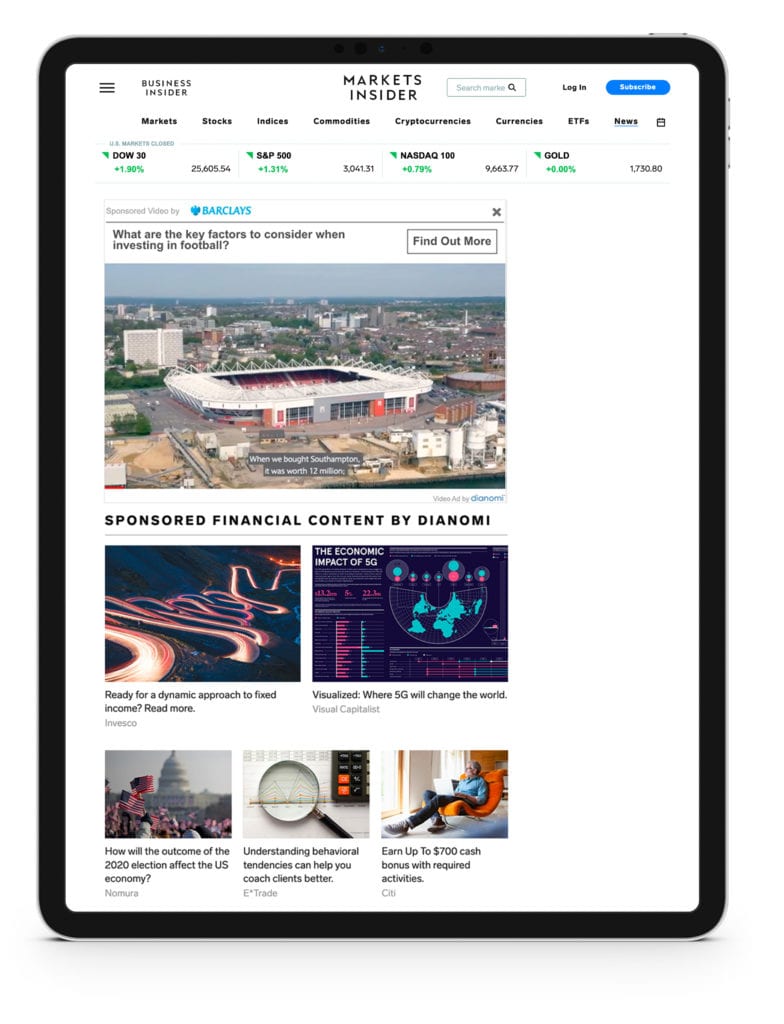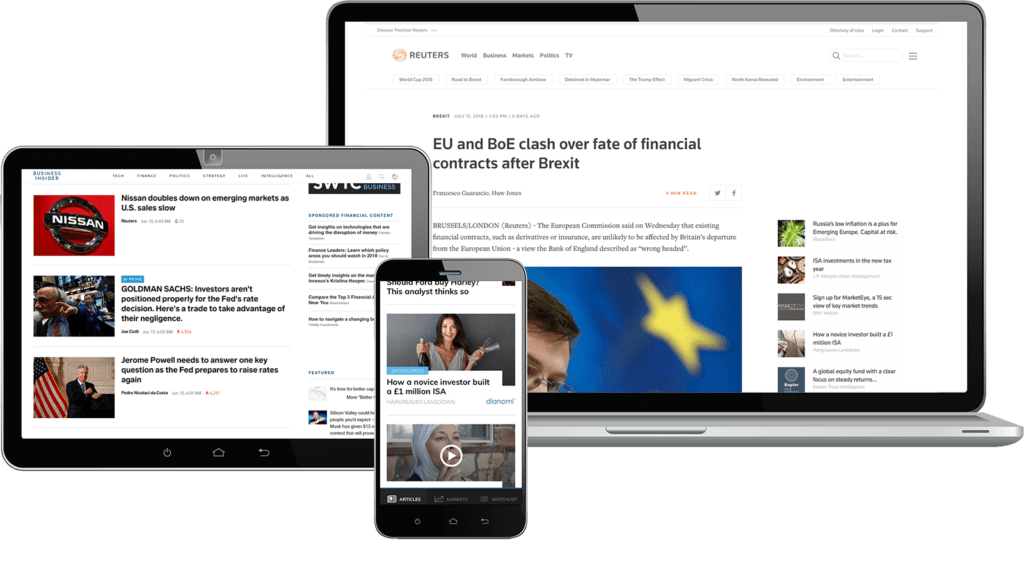Investors remain hungry for content.
More than three months into the Covid-19 pandemic in Western countries, investors are still searching for insight and expertise that might help them navigate a path through the volatility that the crisis has prompted. Data from Dianomi reveals surging interest in financial content online continued during June, as investors looked for support and advice.
Looking across four major asset classes – equities, fixed income, real estate and commodities – Dianomi registered a 24% increase in investors’ consumption of online financial content in June compared to May. Consumption is up by an average of 11% on January, before the Covid-19 crisis broke. Equity-related content accounts for around three-quarters of consumption on the sites tracked by Dianomi, with demand for coverage remaining high despite the relative calm that has descended on world stock markets in recent weeks. US stocks were almost completely flat during June, but investors are still consuming 12% more content on average than in January.

Moreover, while investors’ appetite for equity-related content has fallen back compared to the height of the crisis, their levels of engagement have continued to rise all year. Dianomi’s Engagement Index, which tracks reader engagement over time, has risen from 4.5 at the beginning of the year in equities to 5.5 last month. The data suggests that investors remain anxious about their stock market investments despite the more recent easing of market turbulence. While world stock markets have recovered some of the losses they sustained at the beginning of the pandemic, most remain well below their levels in the first quarter of the year. Dianomi’s analysis suggests the story is similar in other asset classes.
In fixed-income and bonds, for example, investors have continued to search out content in greater numbers, reflecting both the increased volatility of global bond markets and the difficulties of securing yield in the ongoing low interest rate environment. The US Federal Reserve kept interest rates at zero last month, but there has been increasing pressure in recent weeks for a move towards negative rates. This is one reason why investors are consuming 11% more fixed-income content each month than in January. Engagement with fixed-income content has also been maintained.
Interest in commodities has also been significant, with June’s Engagement Index score of 6.1 higher in this asset class than any others. Consumption is 9% up on average compared to January. In part, the interest in commodities in recent weeks will reflect the sustained increase in prices of many raw materials since the low points recorded in March and April. Investors also continue to seek out content on gold, the ultimate safe-haven asset.
Meanwhile, content on real estate is also in demand. While consumption of real estate content has grown less rapidly during the crisis – potentially reflecting reduced transaction volumes during the lockdown – the asset class is still recording an average of 4% more consumption each month compared to January. Amid the volatility on traded exchanges, investors continue to look to alternative asset classes for diversification and return opportunities.
At an aggregate level, Dianomi’s data suggests that the spike in demand for news, commentary and advice on financial markets registered at the beginning of the pandemic has been maintained. Indeed, in challenging markets – Dianomi analysis suggests 52% of all content last month had a negative tone – investors continue to need help. And with so much uncertainty continuing – and the Covid-19 virus far from under control in many markets – their appetite for insight remains elevated.



















